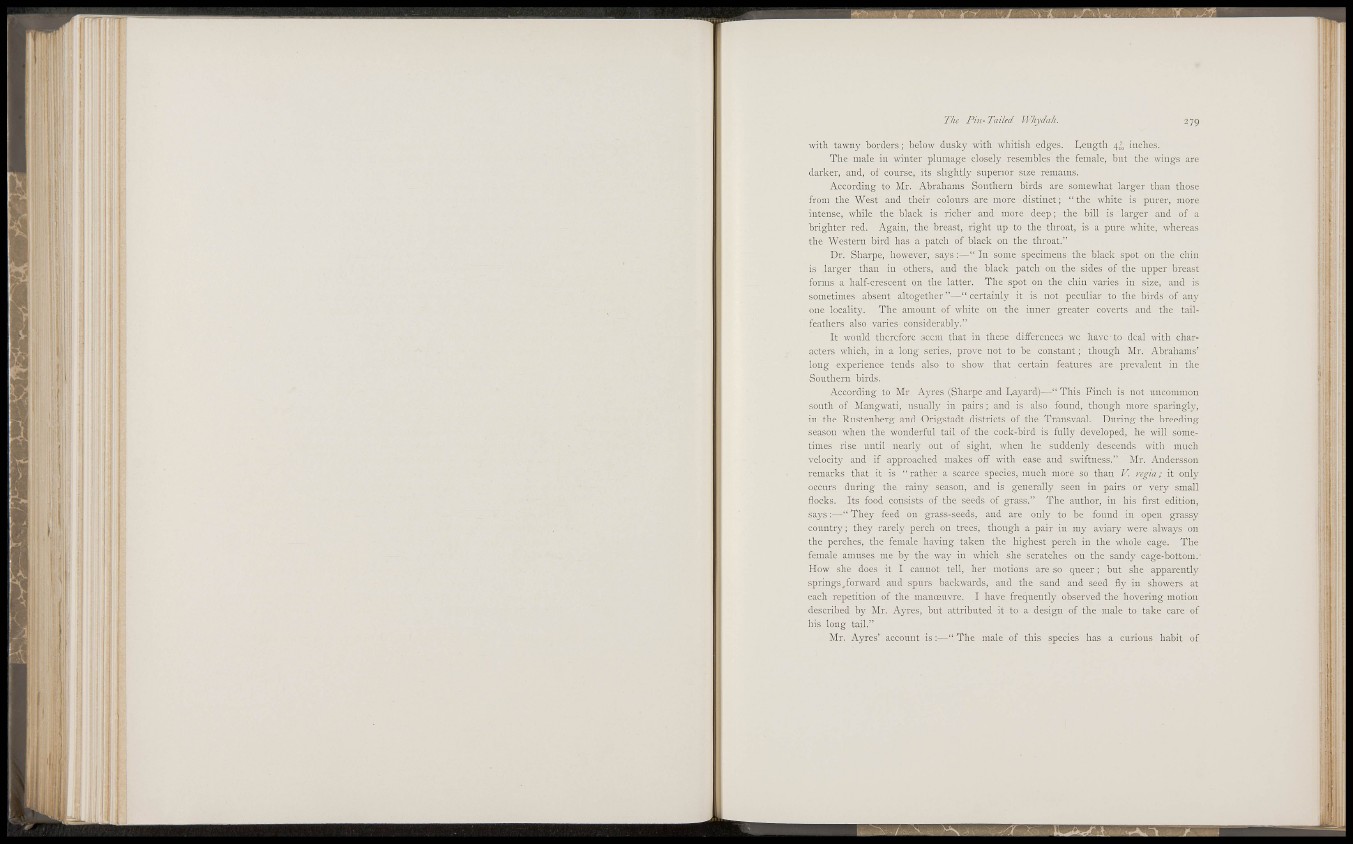
1 'f
i
i
I •
fi . ;! ; • i
The Pin-Tailed Wliydah.
^vith tawnjr borders ; below dusky with whitish edges. Length 4/„ inches.
The male in winter plumage closely resembles the female, but the wings are
darker, and, of course, its slightl}' superior size remains.
According to Mr. Abrahams Southern birds are somewhat larger than those
from the West and their colours are more distinct; "the white is purer, more
intense, while the black is richer and more deep ; the bill is larger and of a
brighter red. Again, the breast, right up to the throat, is a pure white, whereas
the Western bird has a patch of black on the throat."
Dr. Sharpe, however, says :—" I n some specimens the black spot on the chin
is larger than in others, and the black patch on the sides of the upper breast
forms a half-crescent on the latter. The spot on the chin varies in size, and is
sometimes absent altogether"—"certainly it is not peculiar to the birds of any
one locality. The amount of white on the inner greater coverts and the tailfeathers
also varies considerably."
I t would therefore seem that in these differences we have " to deal with characters
which, in a long series, pro\-e not to be constant ; though Mr. Abrahams'
long experience tends also to show that certain features are prevalent in the
Southern birds.
According to Mr Aj'res (Sharpe and Taj'ard)—"This Finch is not uncommon
south of Mangwati, usually in pairs ; and is also found, though more sparingly,
in the Rustenberg and Origstadt districts of the Transvaal. During the breeding
season when the wonderful tail of the cock-bird is fully developed, he will sometimes
rise until nearly out of sight, when he suddenly descends with much
velocity and if approached makes off with ease and swiftness." Mr. Andersson
remarks that it is "rather a scarce species, much more so than V. regia; it only
occurs during the rainy season, and is generally seen in pairs or very small
flocks. Its food consists of the seeds of grass." The author, in his first edition,
says:—"They feed on grass-seeds, and are only to be found in open grassycountry
; they rarely perch on trees, though a pair in my aviary were always on
the perches, the female having taken the highest perch in the whole cage. The
female amuses me by the way in which she scratches on the sandy cage-bottom.
How she does it I cannot tell, her motions are so queer ; but she apparently
springs forward and spurs backwards, and the sand and seed flj' in showers at
each repetition of the manoeuvre. I have frequently observed the hovering motion
described by Mr. Ayres, but attributed it to a design of the male to take care of
his long tail."
Mr. Ayres' account is :—" The male of this species has a curious habit of
I <'
J i t .
•l!
!l!.
i j ;
I I